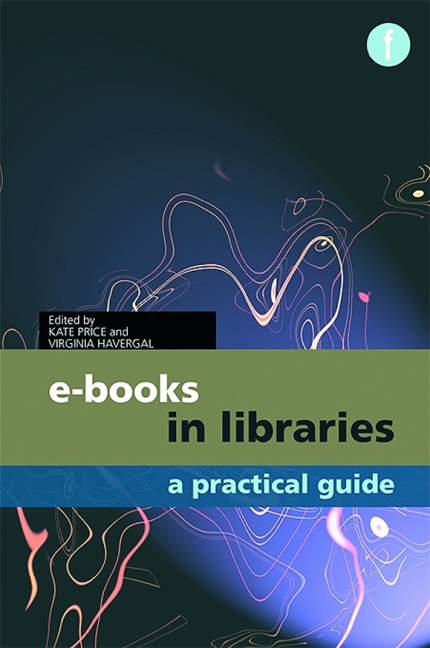Book contents
- Frontmatter
- Contents
- Preface
- The contributors
- Editors’ note
- Introduction
- Part 1 The production and distribution of e-books
- 1 Publishing e-books: challenges and perspectives
- 2 An introduction to e-book business models and suppliers
- 3 Producing eBooks on Demand: a European library network
- 4 E-books for free: finding, creating and managing freely available texts
- Part 2 Planning and developing an e-book collection
- Part 3 Delivering e-books to library users
- Part 4 Engaging readers with e-books
- Part 5 The future of e-books
- Part 6 Useful information
4 - E-books for free: finding, creating and managing freely available texts
from Part 1 - The production and distribution of e-books
Published online by Cambridge University Press: 08 June 2018
- Frontmatter
- Contents
- Preface
- The contributors
- Editors’ note
- Introduction
- Part 1 The production and distribution of e-books
- 1 Publishing e-books: challenges and perspectives
- 2 An introduction to e-book business models and suppliers
- 3 Producing eBooks on Demand: a European library network
- 4 E-books for free: finding, creating and managing freely available texts
- Part 2 Planning and developing an e-book collection
- Part 3 Delivering e-books to library users
- Part 4 Engaging readers with e-books
- Part 5 The future of e-books
- Part 6 Useful information
Summary
Introduction
Most of this book concentrates on acquiring and managing e-books that are commercially available. But there are other options. Almost as soon as the internet came into existence, it was being used to freely disseminate full textbooks and reports. At first these were created through typing in basic ASCII (American Standard Code for Information Interchange 2) text, then with desktop publishing and word-processing applications, and by scanning in existing text and using OCR to instantly create keyword searchable text files. Now graphical, audio and video elements are embedded in books and documents through the use of cheap and widely available hardware and software.
Today, there are millions of texts freely available online through myriads of small scale efforts right on up to the behemoth that is Google Books. However, few libraries are currently making full use of this fantastic resource. This chapter aims to raise awareness of a small fraction of this content, explain the pros and cons of free e-books, address some of the issues involved with managing ongoing access to a collection that contains freely available texts, and also introduce the option of creating e-books in-house, by writing them from scratch or through digitizing existing published or unpublished works.
Making use of free e-books
Advantages
Free e-books have one rather obvious advantage – they do not require an acquisitions budget. But the following should also be considered:
1 Some essential reference resources that a library might already receive in print are also available freely online. These include government statistical publications and accounts, census data, government reports, and publications and statistics from nongovernmental organisations (NGOs) and international bodies such as the United Nations (UN), the World Health Organization (WHO) and the EU. It is therefore a fairly easy matter to include a link from the catalogue record of the print publication to the online version, quickly making this material much more easily available to library users without the need for them to search across the web for it. In addition, the factual information within this type of reference material is often more quickly and simply accessed online through a search interface tailored to the resource in question.
- Type
- Chapter
- Information
- E-books in LibrariesA practical guide, pp. 53 - 68Publisher: FacetPrint publication year: 2011
- 1
- Cited by



